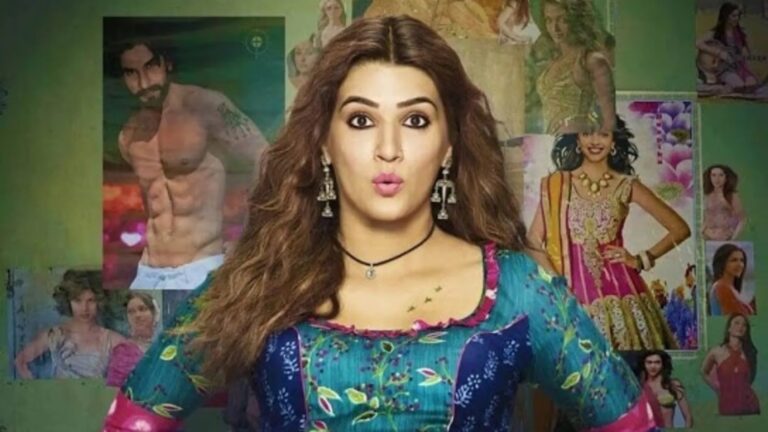Bollywood film Mimi raises several concerns around surrogacy in India. Commercial surrogacy comes with health, mental hazards. It can’t become a poverty eradication programme.
India introduced the Surrogacy Act in 2021 to curb commercial surrogacy. With a restriction introduced in some Asian countries, the practice has moved to other developing countries in Southeast Asia, Africa and South America following a pattern of global inequalities.
Classism and racism are the two important intersectional marginalities that characterise the global surrogacy markets. Gena Corea (1985) and Andrea Dworkin (1983) in their books had cautioned that the commercial surrogacy market would move to the poorer countries in the third world. Presently, the majority of the surrogate mothers are from lower income groups and it is mainly the low-income countries that is the market place providing wombs and other bio-material (eggs, sperms, breast milk, stem cell, tissues and the children) to feed this trade.
Mimi, a film directed by Laxman Utekar, produced by Dinesh Vijan, with Kriti Sanon (playing the role of Mimi), touches upon some important issues of the transnational commercial surrogacy markets. I relate the film ‘Mimi’ to my study findings on transnational commercial surrogacy in Gujarat one in 2009-10 and a follow-up study in 2019-20.
‘Maa’ or ‘Maal’: Objectification of the surrogate mother
The film begins with John and Summer going around India looking for a surrogate mother. They want Mimi (Kriti Sanon) as their surrogate mother after watching her dance to a typical Bollywood number. Mimi’s friend Shama asks Summer, “surrogate mother toh koyi bhi ban sakti hain?” Anyone can become a surrogate mother; why only Mimi?” To which Summer answers: “She’s young and healthy, and she’s a dancer”.
Most surrogate mothers, egg and sperm donors are selected based on the physical appearance and other characteristics such as body weight, skin colour, religion, caste and language spoken. In the film, the agent (Bhanu) refers to Mimi as ‘kya maal hain’, ‘a product’, and quickly changes to ‘Maa’ when she gets offended.
Bhanu elaborates “John wants to grow his sugarcane in your fertile land, because his field is barren”, referring to surrogacy as a solution to infertility.
Mimi, is an aspiring actress, but needs money to fulfil her ambition to become an actress. The agent glorifies motherhood, praises her ‘body’ and eventually Mimi agrees to surrogacy upon hearing the amount of remuneration (Rs 20 lakh). In reality, surrogate mothers in India are paid only Rs 3 lakh to 4 lakh. The surrogacy clinics in India also glorify ‘motherhood’ as a strategy to coerce women into surrogacy. However, this emotion is easily dismissed at time of the relinquishment of the child.
The IVF trials is painful process and entails high risk for the surrogate mothers, but the film did not touch upon this process. Woo et al., in their study in 2017 found that surrogacy pregnancies were high risk as compared to normal pregnancies for the same mothers and also entail higher obstetric complications and higher morbidity such as likelihood; of caesarean section, to develop gestational diabetes, hypertension and placenta previa.
In search of the perfect baby
There’s a price tag on all babies and extra babies (twins/triplets), also for boys or fair skinned babies born in this market. In the film, Mimi is pregnant; “congratulations” everyone shouts with happiness. Mimi is excited like a child that her dream to become an actress is one step closer now.
Everything changes the moment the doctor informs that the baby may have ‘Down Syndrome’. “We can’t raise this child; this is not what we wanted”, cries Summer. The child becomes merely an object that needs to be discarded.
A EUROCAT data with selected participating states in European countries provides insight into the extent of abortions that are done after prenatal screening. The data reveals 22 per cent of the foetuses detected with any anomalies after prenatal testing were terminated between 2013 and 2019.
In 2019, one quarter of foetuses were aborted on the detection of cleft lips in Switzerland and 21 per cent, all with Turner Syndrome in Germany and Switzerland and most foetuses with Down Syndrome in Switzerland (92 per cent) and Germany (60 per cent) were aborted.
In the movie, John and Summer quit the surrogacy contract and flee to America on hearing that the baby may have Down Syndrome. Mimi decides to continue with the pregnancy.
There’s a similar case in Thailand, Baby Gammy, was detected with Down Syndrome after prenatal screening, and was deserted during the surrogacy contract. But not all prenatal genetic diagnosis reports are accurate, as the film rightly shows. Mimi gives birth to a child without any anomalies.
The body image and prevailing craze for fair skin is known to impact the surrogacy bazaar. People in India have ordered oocyte (sperms and eggs) at exorbitant rates from Denmark and transferred embryos into surrogate mothers just to have babies with fairer skin. On birth of the fair skinned baby, comments such as: “pure shahar mein aisa bacha nahi hoga, itna haseen bacha” (such a beautiful child cannot be found in the entire town). Lotus has bloomed in muddy waters. He’s the star of the town” rightly shows the racist colour discrimination that exists in the surrogacy markets in India.
Bonding of biological parents
Mimi, who became a surrogate mother primarily for the money, starts bonding with the child and gives up her aspiration of becoming an actress. About four years later the intended mother, Summer, returns to India, apologising profusely to Mimi “I’m so sorry, I’m so glad you kept our baby”.
The intended father threatens to file a case against Mimi for the custody of the child when she refuses to part with him. Mimi and her family are economically vulnerable.
This is also common in India, where some surrogate mothers may want to keep the baby but cannot do so because they are monetarily not in a position to fight a legal battle and moreover because they were not even given a copy of the contract.
In my study, almost all the surrogate mothers said that they felt attached to the babies and kept wondering “how the babies would look like? how big would they have grown?”
In India, some surrogate mothers are not even shown the face of the baby, while others are left high and dry after an extended period of physical bonding. Her duty is usually confined to providing breastmilk, some are not allowed to touch the baby but provide milk using breast pump.
Some surrogate mothers were looking after the babies as nannies and they bonded intensely with the babies. My follow-up study revealed that all these surrogate mothers were experiencing sadness of separation. A recent PhD thesis found that Indian surrogate mothers were more depressed than the comparison group of non-surrogate mothers, during pregnancy and after birth.
The PhD study also revealed that women who experienced social humiliation, anticipation of stigma, or received insufficient support during pregnancy experienced higher levels of depression following the birth.
The Indian ‘Market’ for Surrogacy
Most of what is depicted in Mimi, the film, in reality, occurs in the surrogacy Bazaar in India. Overall the film was very close to the findings of my study in India. India had become a bazaar where all kinds of biomaterials were on sale. IVF clinics providing surrogacy mushroomed all over the country.
The problems began emerging when women lost their lives (both surrogate mothers and egg donors), children were abandoned, long legal battles left children without any citizenship, objectification and exploitation of women and children and trafficking of young girls into surrogacy became more and more evident. Hence, the Surrogacy Act 2021 has begun the process of putting an end to commercial surrogacy.
Paying a price
The manifestation of forms of discrimination such as geneticisation, racism, classism, neo-colonialism is evident in the selection criteria of surrogate mothers and oocyte donors, monetary motivation of surrogate mothers and doctors, various forms of rhetoric used in the process, relationship expressed towards the child, the relinquishment experienced by the surrogate mothers and maternal bonding in the surrogacy process.
Academics, feminists, ethicists, and disability rights activists have critiqued the surrogacy practice that reinforces social prejudices such as imperialism, classism, racism, sexism, and ableism.
In India, the control over certain (less affluent) women’s bodies and labour has caused women severe physical and psychological harm.
Surrogacy has harmed not only the well-being of the surrogate mothers but also her children and in some cases her family members. The monetary benefits have been negligible in the lives of the surrogate mothers as against the high cost the surrogate mothers have to pay for their physical and psychological well-being.
During the Covid-19 pandemic lockdown, women from middle class families in India too have got dragged into this market (egg donation and surrogacy) due to cash crunch and loss of employment. The new Act will make it more difficult to find surrogate mothers. Yet loopholes remain regarding altruistic surrogacy that is allowed in the Act. The motivation for women to involve in surrogacy is still economic – they want to save their families from poverty.
Real meaning of women empowerment
To me, ‘empowerment’ would mean women getting a sustainable job. Surrogacy has an adverse impact on women’s health; each event of surrogacy entails trials of myriad kinds and the women were involved in several surrogacies. Although the Surrogacy ACT 2021 says one woman can be involved in only one episode of surrogacy, it is very difficult to monitor. The question is; how many babies can women keep having until their family comes out of poverty? Not all poor women can be involved in surrogacy; it depends on the capacity of the woman to reproduce, her health status, her age and other such factors.
The other questions that need to be asked are, how many women experience severe morbidity post-surrogacy? There is no record of women whose uterus has to be removed due to the impact of the high-risk surrogacy pregnancies or have contracted diseases during the surrogacy process. My study has found that women lose their capacity to work post-surrogacy and hence most have lost their livelihood.
In sum, commercial surrogacy couldn’t be a way out of poverty or cannot be seen as a poverty eradication program. Even the present Act allowing altruistic surrogacy leaves a loophole for the rich to use poor women’s bodies to have babies.
Write to us at [email protected]




